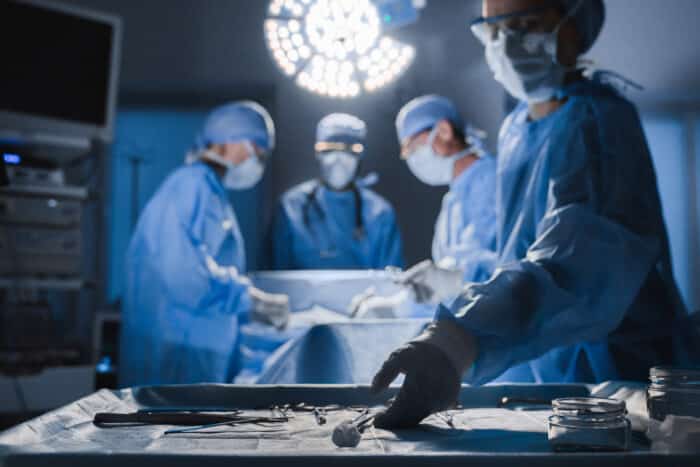Fascinated about becoming a sterile processing technician?
The best part about becoming one is, you get to enter the rewarding industry of healthcare without a degree. All you need is your high school diploma or a GED, and some form of formal sterile processing technician education.
When it comes to becoming one, getting a CRCST certification is like your passport to the sterile processing technician world.
In this article, we will discuss in detail everything you need to know about CRCST certification and more.
So, let’s dive right in.
What is a Sterile Processing Technician?
Let us first tell you what exactly a sterile processing technician is, and what their duties include.
A Sterile Processing Technician is a healthcare professional responsible for ensuring the cleanliness, sterilization, and proper handling of medical instruments and equipment used in healthcare settings.
Their primary goal is to prevent infections and maintain a safe environment for medical procedures.
Here are their key duties:
- Sterilization: Operating sterilization equipment to clean and sterilize medical instruments thoroughly.
- Inspection: Inspecting instruments for damage or defects and ensuring they meet cleanliness standards.
- Assembly: Assembling instrument trays and packaging items appropriately for sterilization.
- Inventory Management: Managing inventory to ensure an adequate supply of sterile instruments for medical procedures.
- Compliance: Adhering to strict protocols and guidelines to maintain compliance with industry standards.
- Collaboration: Working closely with healthcare professionals to provide sterile instruments for procedures.
- Record-Keeping: Maintaining detailed records of sterilization processes and equipment maintenance.
- Quality Control: Ensuring the quality and effectiveness of sterilization processes.
Read: What is a Sterile Processing Technician
What Does a Sterile Processing Technician Do?
Is Getting Certified as a Sterile Processing Technician Necessary?
This is one burning question common among aspiring sterile processing technicians, whether getting certified is necessary.
To answer briefly, yes it is.
While certification as a Sterile Processing Technician is not always mandatory by law, it is highly recommended and often preferred by employers in the healthcare industry.
Certification demonstrates that an individual has undergone specialized training, possesses the necessary knowledge, and has met industry standards in sterile processing.
Here’s why certification is beneficial:
Industry Recognition:
Many employers prefer hiring certified individuals due to their demonstrated knowledge and commitment to maintaining cleanliness and safety standards.
Skills Validation:
Certification validates proficiency in sterilization techniques, equipment handling, and infection control practices.
Career Advancement:
Certified technicians may have an edge during the hiring process over non-certified candidates. Some advanced positions or promotions within sterile processing departments may require certification as a prerequisite.
Patient Safety:
Certified technicians contribute to maintaining a safe environment for patients by adhering to standardized sterilization practices.
Also see: Sterile Processing Technician Salary
What is the CRCST Certification?
The CRCST (Certified Registered Central Service Technician) certification is a professional certification that is offered by the International Association of Healthcare Central Service Materiel Management (IAHCSMM).
It is specifically designed for individuals working in the field of sterile processing and central service.
Key Aspects of CRCST Certification:
1. Focus: The certification assesses an individual’s knowledge and proficiency in various aspects of sterile processing, including sterilization techniques, infection control, equipment handling, and regulatory guidelines.
2. Certifying Body: Administered by IAHCSMM, an internationally recognized organization in healthcare central service management.
3. Certification Process: To earn the CRCST certification, individuals typically need to complete a formal education program or acquire relevant work experience in sterile processing. They then must pass the CRCST exam, demonstrating their understanding of industry standards and best practices.
4. Benefits: CRCST certification showcases an individual’s commitment to upholding the highest standards of cleanliness and safety within healthcare facilities. It enhances job prospects, validates skills, and contributes to maintaining a safe environment for patients and healthcare staff.
5. CRCST Certification: The exam fee ranges from $125 to $200 for IAHCSMM members and $225 to $300 for non-members.
6. Preparation Process:
- Education or Experience: Candidates can qualify for the exam through formal education programs or relevant work experience in sterile processing.
- Study Materials: IAHCSMM offers study materials, including textbooks, online courses, and practice exams, to aid in exam preparation.
- Self-Study: Utilize textbooks and online resources to study various topics related to sterilization, infection control, and equipment handling.
- Practice Exams: Taking practice exams can help familiarize candidates with the exam format and types of questions.
Also see: Best Online Sterile Processing Course
Conclusion:
Obtaining the CRCST certification demonstrates proficiency in sterile processing techniques and adherence to industry standards, validating skills in maintaining sterile environments within healthcare settings. Preparation involves a combination of education, self-study using provided materials, and practice exams to ensure readiness for the certification exam.
Read more on: Sterile Processing Technician Certification
Related Resources:
- Certified Sterile Processing Technician
- Travel Sterile Processing Technician
- How to Become a Sterile Processing Technician
- Sterile Processing Technician Job Description
- Sterile Processing Technician Requirements
- Sterile Processing Technician Resume
- Sterile Processing Technician vs. Surgical Technologist
- Sterile Processing Technician Training
- Sterile Processing Technician School
- Sterile Processing Technician Certificate Program
- Sterile Processing Technician Course
- How Long Does it Take to Become a Sterile Processing Technician
- Sterile Processing Technician Training Program Cost
- Sterile Processing Technician Exam
Related Articles
-
How to Be Successful in College in 2022 – 7 Simple Tips to Succeed
-
How Do Scholarships Work? Read This First…Truth is Shocking
-
7 Best College Majors 2024: What Should I Major In?
-
How to Choose a College – 10 Things You Must Consider in 2024
-
Why Go to College? Top 13 Benefits for Adult Students in 2022
-
Top 5 Best Alternatives to Community College for 2024







